Lenovo Yoga Chromebook C630 vs. Google Pixelbook: Which Premium Chromebook Wins?
The Lenovo Yoga Chromebook C630 and Google Pixelbook are two species in a rare but growing breed of premium Chromebooks. Google's $999 2-in-1 first proved that Chrome OS was worthy of luxury hardware, but now rival laptop makers are joining the party with their own premium devices.
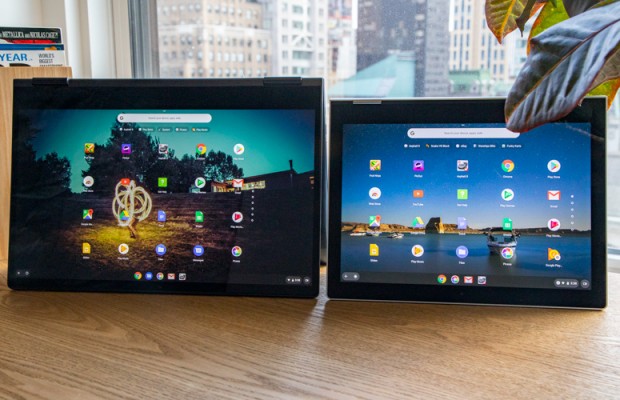
The Yoga Chromebook C630 is in a category of its own as the first Chromebook with a 4K panel. Along with a detailed, 15.6-inch display, the Chromebook C630 has a flexible aluminum chassis and powerful components, including a Core i5 CPU.
Google's Pixelbook has long been the go-to premium option for fans of Chrome OS, but does it retain that title against the compelling Yoga Chromebook C630? Let's find out.
Lenovo Yoga Chromebook C630 vs. Google Pixelbook: Specs compared
| Row 0 - Cell 0 | Lenovo Yoga Chromebook C630 | Google Pixelbook |
| Starting Price (as configured) | $599 ($899) | $999 ($1,199) |
| Colors | Midnight Blue | Silver |
| Display | 15.6-inch, 4K | 12.3-inch, 2400 x 1600-pixels |
| CPU | Intel Core i5-8250U | Intel Core i5-7Y57 CPU |
| RAM | 8GB | 8GB |
| SSD | 128GB | 256GB |
| Key Travel | 1.4mm | 0.9mm |
| Ports | 2 USB-C, USB 3.0, microSD card, headphone | 2 USB-C, headphone |
| Webcam | 720p | 720p |
| Size | 14.2 x 9.8 x 0.7 inches | 11.4 x 8.7 x 0.4 inches |
| Geekbench 4 | 9,021 | 7,927 |
| Battery Life (hrs:mins) | 6:53 | 7:43 |
| Weight | 4.1 pounds | 2.5 pounds |
Design
The Yoga Chromebook C630 and Pixelbook both have sturdy aluminum chassis, but the Google laptop is sleeker, more portable and better looking.
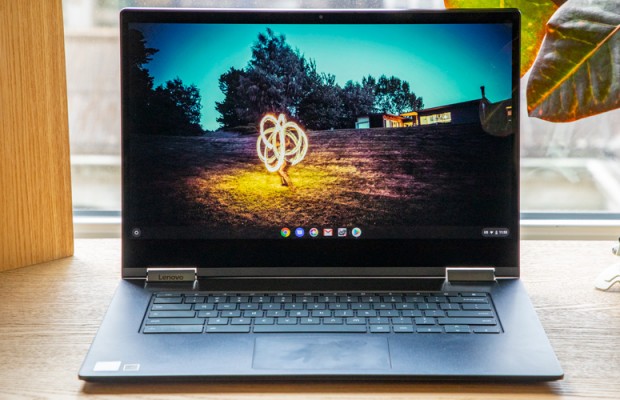
The Yoga Chromebook C630's design is simple and elegant, but a bit too bland for my taste. The laptop's Midnight Blue aluminum chassis doesn't have any defining characteristics. The lid has a Yoga logo and hidden gray Chrome branding. Those small icons along with a Lenovo emblem on the left hinge are all that adorn the monochrome chassis.
Stay in the know with Laptop Mag
Get our in-depth reviews, helpful tips, great deals, and the biggest news stories delivered to your inbox.
MORE: Best Chromebook: Reviews & Comparisons
That's a shame because simple additions like diamond-cut edges or chrome trim would have helped highlight the laptop's stylish dark-blue finish. The Chromebook C630 has thin bezels except under the display, where you'll find a chunky bottom chin.
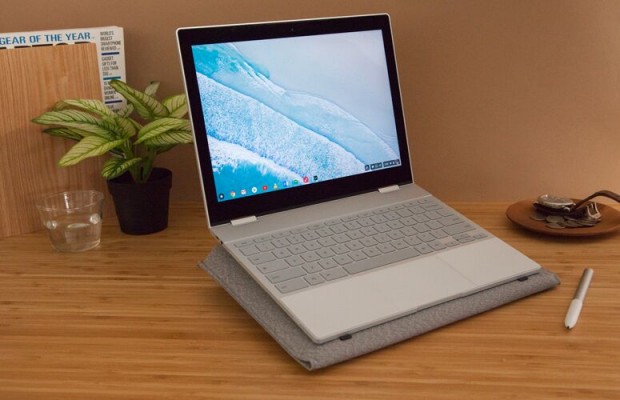
The Pixelbook's chaotic design is in stark contrast to the Yoga Chromebook C630's conservative appearance. The Pixelbook's lid sports a two-tone silver-aluminum-and-white- glass finish with a light-gray Google logo in the corner. The bottom of the laptop has a similar two-tone design, except the white portions are silicon, not glass.
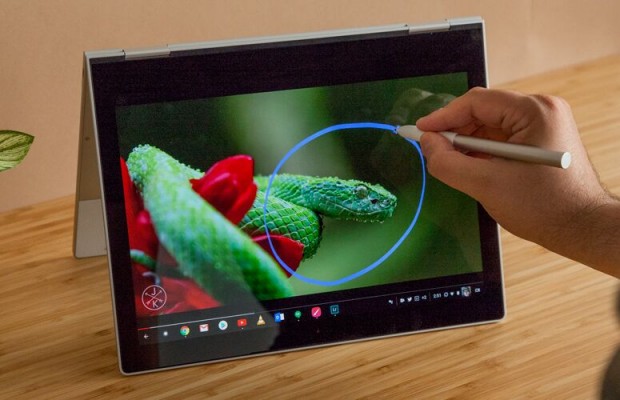
You'll find even more grayscale shades on the Pixelbook's deck, where a white touchpad is flanked by an off-white rubberized wrist rest. The aluminum deck of the Pixelbook hides beneath a light-gray keyboard with a transparent font. The Pixelbook exudes a mid-century stylishness but its ugly, thick display bezels are more antiquated than modern.
Both of these laptops are bendback 2-in-1s so you can transform them into a tablet or view content in tent mode. The hinges on both devices are sturdy and required the appropriate amount of force to rotate.
Buy Google Pixelbook on Amazon.com
The first thing you'll notice when comparing these laptops side-by-side is their size difference. The 12.3-inch Pixelbook (11.4 x 8.7 x 0.4 inches, 2.5 pounds) not only has a smaller footprint than the 15.6-inch Yoga Chromebook C630 (14.2 x 9.8 x 0.7 inches, 4.1 pounds), but it's also much thinner and lighter.
Winner: Pixelbook
Ports
Predictably, the large Yoga Chromebook C630 offers a wider variety of ports than the Pixelbook.
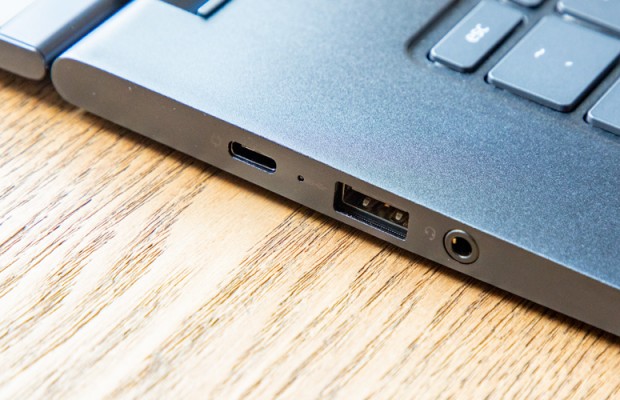
On the left side of the Chromebook C630 are a USB-C port, a USB 3.0 port and a headphone jack. The right side houses a second USB 3.0 port, a microSD card slot and a Kensington lock.
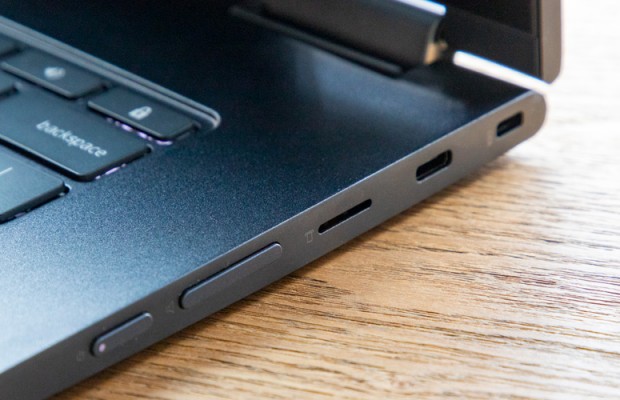
Dual USB-C ports are split between each edge of the Pixelbook, along with a headphone jack on the left side.
Winner: Yoga Chromebook C630
Display
The Yoga Chromebook C630 is the world's first Chromebook with a 4K display. While its pixel-packed panel is extremely detailed, the Pixelbook's 12.3-inch, 1080p display is brighter, more colorful, with more natural colors.
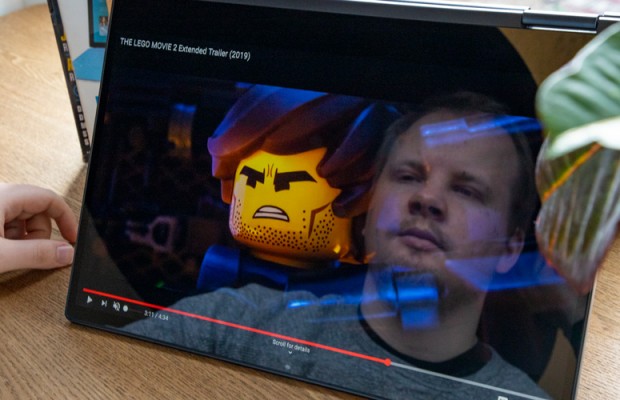
The 15.6-inch, 4K display on the Yoga Chromebook C630 covers 107 percent of the sRGB color gamut. That makes it more colorful than the average premium laptop's display (83 percent), but not quite as vivid as the FHD panel on the Pixelbook (117 percent).
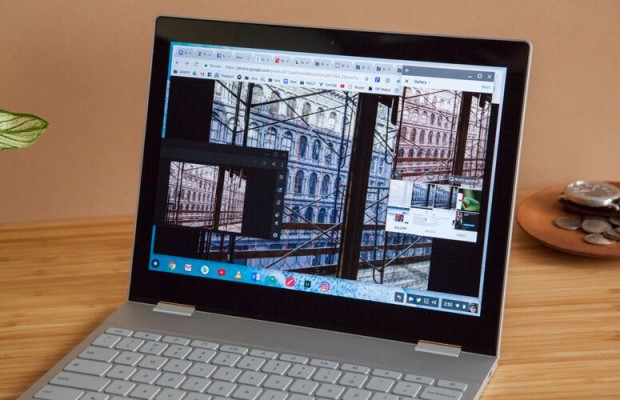
Despite those results, the Chromebook C630's display was a bit more saturated than the Pixelbook's when I watched a trailer for Captain Marvel. The reds in Carol Danvers' (played by Brie Larson) superhero suit looked richer on the Chromebook C630, while plants in a 4K nature video I watched had deeper green tones on the Lenovo laptop.
MORE: Laptops with the Best Display Brightness
However, I suspect the boosted saturation has to do with the Chromebook Yoga C630's poor white balance. The background of my favorite websites was a crisp white on the Pixelbook's display, whereas I noticed an unpleasant yellow tint on the Chromebook Yoga C630's panel. The Pixelbook's (421 nits) display also gets more than 150 nits brighter than the Chromebook Yoga C630's (260 nits).
The Pixelbook has a technically better display, but the larger screen on the Yoga Chromebook C630 is still great for multitasking.
Winner: Pixelbook
Keyboard and Touchpad
Both laptops have decent keyboards, but the Yoga Chromebook C630 (below) is a bit more comfortable to type on.
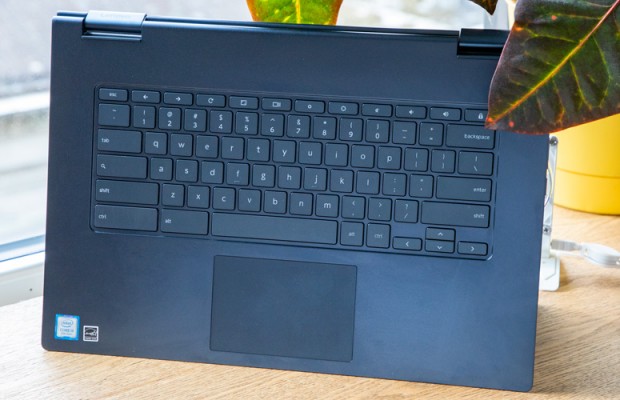
That said, while Yoga Chromebook C630's keyboard is passable, I would have liked more than 1.4 millimeters of key travel (our preference is at least 1.5mm). I found myself bottoming out, or hitting the laptop's deck, more often than I do on other 15-inch laptops. On the bright side, the Yoga Chromebook's clicky backlit keys are well-spaced and require an ideal amount of actuation force (70 grams).
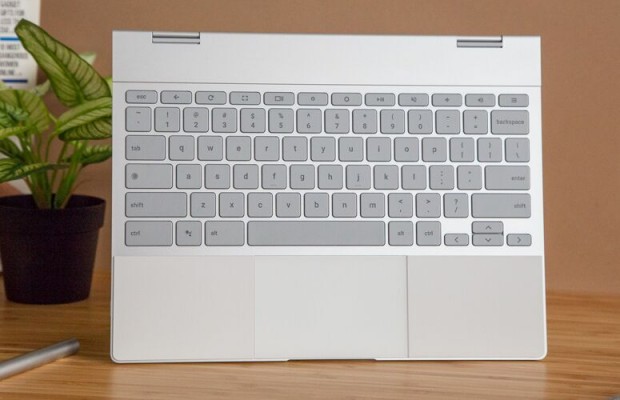
The keyboard on the Pixelbook (above) is even more shallow, with just 0.9 mm of key travel. Despite that shortcoming, I found the keys to be fairly comfortable to type on. There is a nice clickiness to the soft-touch keycaps, and the keys' 68 grams of actuation force never slowed down my fingers.
MORE: How To Deal With Dysfunctional Keys On Your Keyboard
With the Pixelbook, I typed at 119 words per minute with an accuracy rate of 94 percent on the 10FastFingers.com typing test. When I switched to the Yoga Chromebook C630, my speed and accuracy increased to 128 wpm and 98 percent, both of which top my typical results (119 percent, 5 percent error rate).
The 4.0 x 2.7-inch touchpad on the Yoga Chromebook C630 is almost the exact same size and shape as the touchpad on the Pixel Slate (4.0 x 2.8 inches). The surfaces on these laptops are equally responsive, and I had no problems executing Chrome OS gestures, like three-finger swipes, to change programs.
Winner: Yoga Chromebook C630
Performance
The Yoga Chromebook C630 and Pixelbook are two of the top-performing Chromebooks on the market, but Lenovo's laptop offers faster speeds thanks to its newer, U-series CPU.
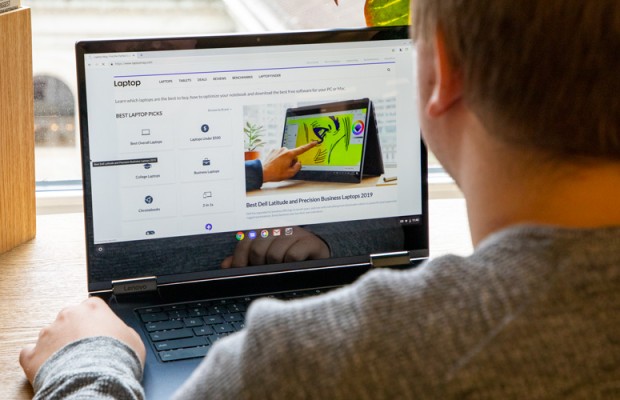
With a Core i5-8250U CPU and 8GB of RAM, the Yoga Chromebook C630 scored a 9,021 on the Geekbench 4.1 overall performance test. The low-powered Core i5-7Y57 CPU (7,927) inside the Pixelbook couldn't keep up, even though it crushed the Chromebook category average (4,018).
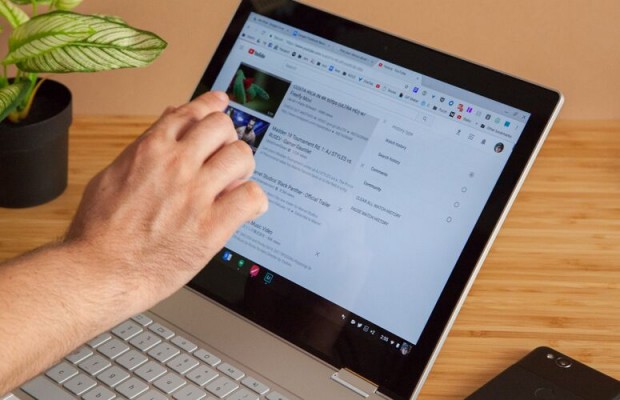
Unsurprisingly, the Yoga Chromebook C630 also topped the Pixel Slate (133.2) on our Jetstream browser test with a score of 172.4. Again, both laptops destroy the Chromebook category average (78.4).
Graphics performance is one area where the Pixelbook beats the Yoga Chromebook C630, although by only a slim margin. The Google laptop maintained a solid 28 fps while it rendered 5,000 fish on the WebGL Aquarium test. The fish displayed on the Yoga Chromebook C630 swam at a choppier 23 fps.
Winner: Yoga Chromebook C630
Battery Life
Battery life is a weak spot for both of these laptops, especially when you compare them with other Chromebooks. The Pixelbook lasted for 7 hours and 43 minutes on our Laptop Mag battery test (continuous web surfing over Wi-Fi at 150 nits). That's not a great result, but it at least outlasted the Yoga Chromebook C630, which powered down after just 6 hours and 53 minutes. By comparison, the average Chromebook endures for an impressive 8 hours and 50 minutes.
Winner: Pixelbook
Value and Price
A fully loaded 4K Yoga Chromebook C630 offers similar components to a base Pixelbook but costs $100 less. For $899, our maxed-out Yoga Chromebook C630 review unit came with a 15.6-inch, 4K touch screen, a Core i5-8250U CPU, 8GB of RAM and a 128GB SSD. An equivalent $999 Pixelbook has the same Core i5 CPU (albeit, a Y-series CPU), RAM and SSD storage capacity, but it sports a 12.3-inch, 2400 x 1600-resolution display
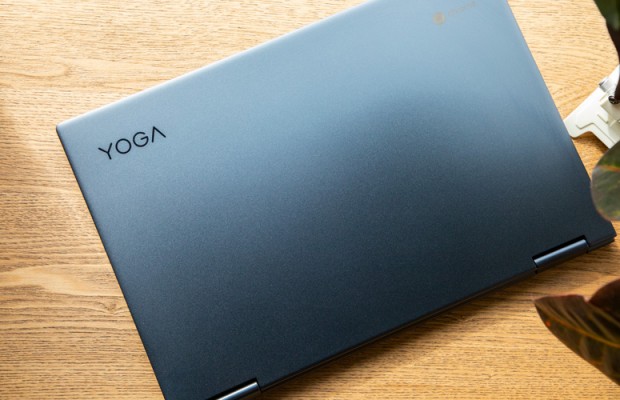
From there, the Pixelbook goes up in specs, whereas the Yoga Chromebook C630 steps down. Lenovo offers a base model C630 for $599 with a 1080p display, Core i3-8130U CPU, 8GB of RAM and 64GB of flash storage. A midtier configuration (our recommended model) costs $719 for a 1080p display, Core i5-8250U CPU, 8GB of RAM and a 128GB SSD.
The Pixelbook, on the other hand, can be configured with a Core i5 CPU, 8GB of RAM and 256GB of SSD storage for $1,199. Splurging on the $1,649 model will get you a Core i7 CPU, 16GB of RAM and a 512GB NVMe SSD.
Winner: Yoga Chromebook C630
Overall Winner: Yoga Chromebook C630
| Row 0 - Cell 0 | Lenovo Yoga Chromebook C630 | Google Pixelbook |
| Design (10) | 7 | 8 |
| Ports (10) | 7 | 5 |
| Display (15) | 12 | 14 |
| Keyboard/Touchpad (15) | 12 | 11 |
| Performance (20) | 16 | 13 |
| Battery Life (20) | 12 | 14 |
| Value (10) | 7 | 6 |
| Overall (100) | 73 | 71 |
The battle between these two premium Chromebooks was a close one, but the Yoga Chromebook C630 prevailed in the end. The Pixelbook put up a good fight with its sleek design, bright and vivid display, and solid battery life, but it just can't keep up with the Chromebook C630 when it comes to performance.
The Yoga Chromebook C630 may be the better overall laptop, but that doesn't mean it's the best choice for you. If you want a portable machine you can slip into a backpack and use away from a desk, then go with the Pixelbook. However, if you want to maximize your productivity at work, then the Yoga Chromebook C630 is the better option.
Credit: Laptop Mag
Phillip Tracy is the assistant managing editor at Laptop Mag where he reviews laptops, phones and other gadgets while covering the latest industry news. After graduating with a journalism degree from the University of Texas at Austin, Phillip became a tech reporter at the Daily Dot. There, he wrote reviews for a range of gadgets and covered everything from social media trends to cybersecurity. Prior to that, he wrote for RCR Wireless News covering 5G and IoT. When he's not tinkering with devices, you can find Phillip playing video games, reading, traveling or watching soccer.

